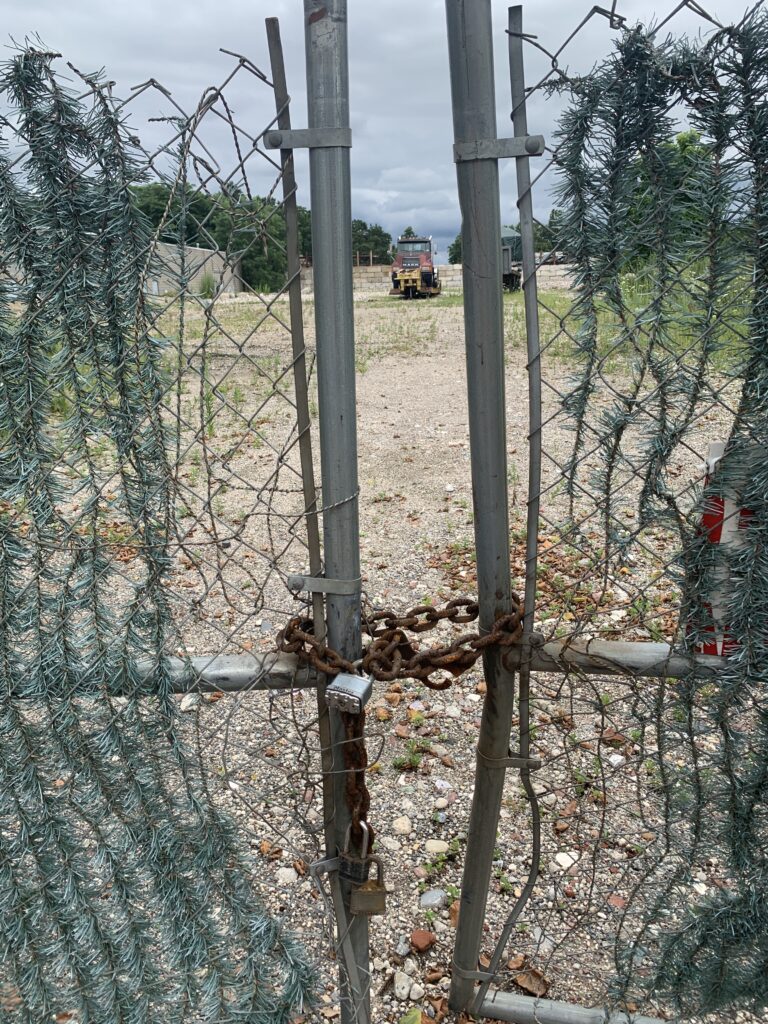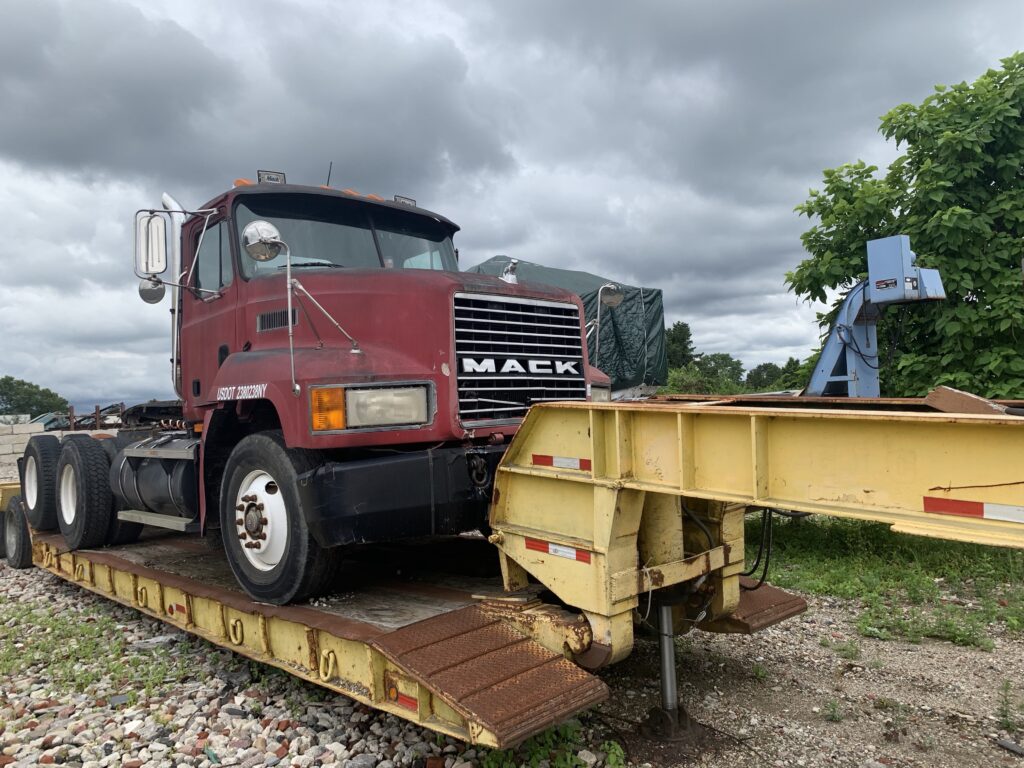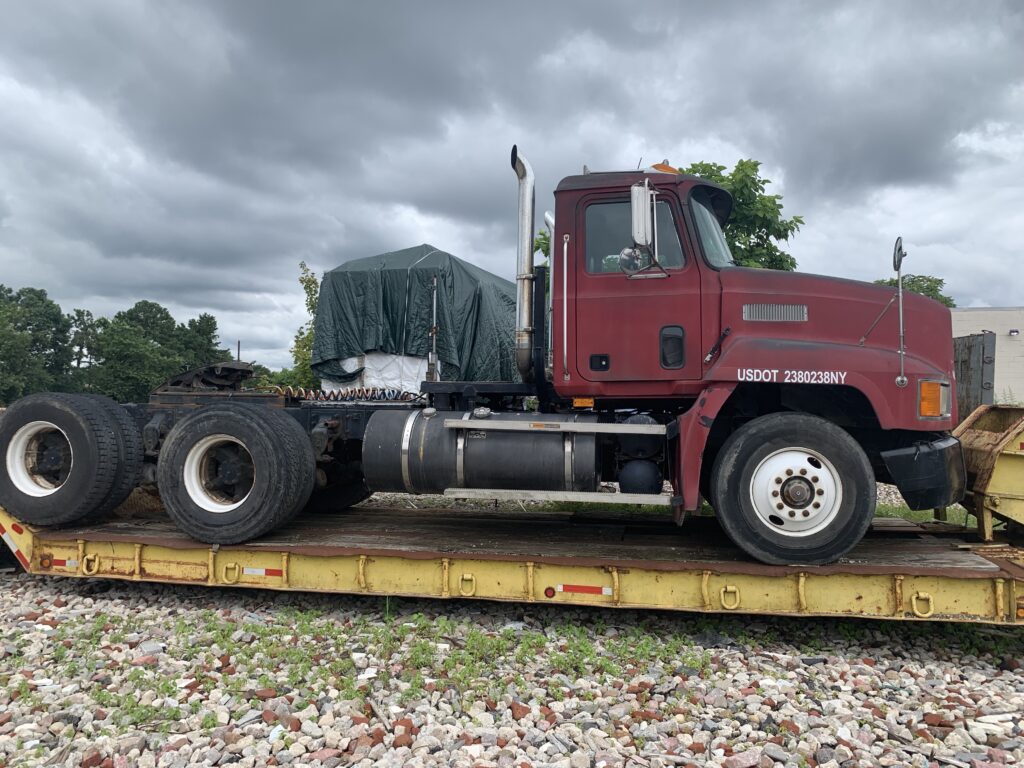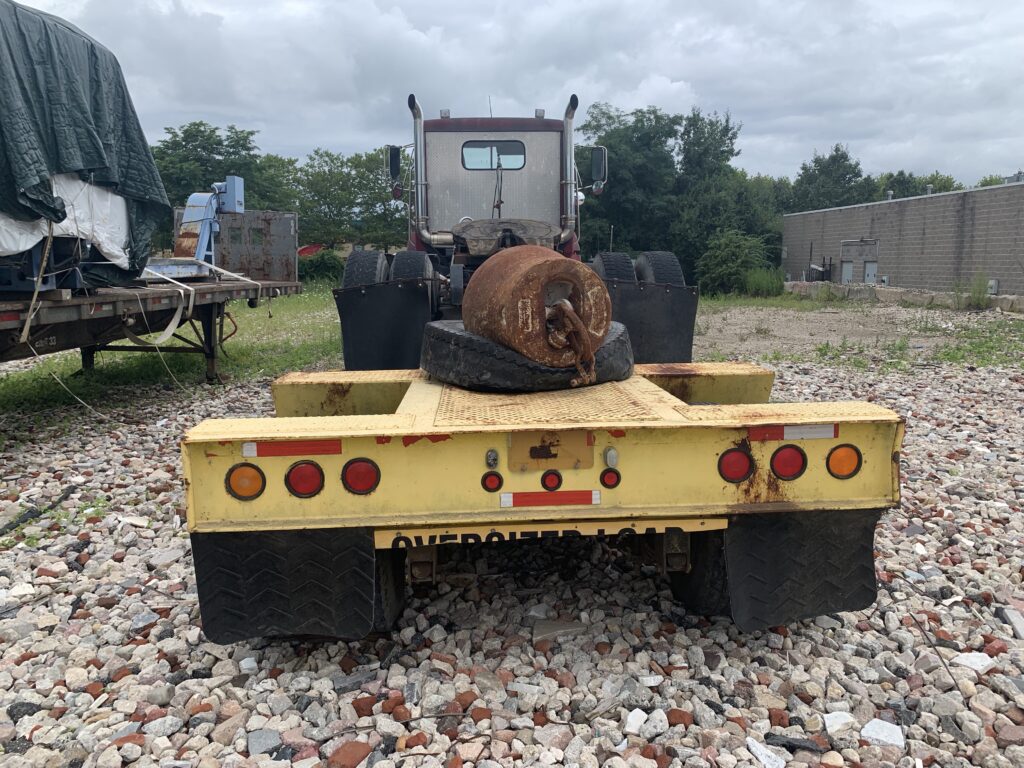I glanced despondently at the empty load board, with little option but to inquire upon a antiquated flatbed in Long Island that needed to be transported all the way down south to Clearwater, FL
“That’s a 53′ long trailer with an ole Mac tractor with a wrecking ball in the back,” stated the broker. “And you have to chain it all down so it doesn’t roll.
The idea of chaining down a truck sent shivers down my spine. I’ve chained down heavy precast concrete pipes back in the day, some that were big enough for Lebron James to stand in.
But chaining down a truck onto a trailer adds a different set of challenges. Unlike concrete pipes that are braced in the front and back to keep them inmobile (and an additional large wire rope going directly over), having a truck as cargo doesn’t afford many places for securement, and since it has four tires that tend to roll, you have to tie it down securely. And if you chain down too tight or improperly, you could damage the truck axles resulting in huge deductions in your pay.
My concerns were palpable, but like everything in this business I was willing to give it a scout’s try.
“You gotta stop and buy some chains and binders. There’s several Harbor Freights on the island,” the owner advised. As if driving anywhere in Long Island was a piece of cake.
Great. Not only do I have to drive through Long Island to find this trailer, I have to stop at a Harbor Freight store first to purchase some chains.
Navigating through the streets of Long Island was a maze. There were several low clearances that was labeled 12′ 7″ that clearly looked passable to the naked eye, but I had to believe in the accuracy of the sign. The incident in the Bronx last month still resonated clearly in my memory, and I had no desire to get stuck under a subway in NYC again.
The low clearances and truck restrictions soon led me to give up picking up the chains. I’ll drive straight to see the truck first to see how many chains are needed. Maybe we’ll never cross that bridge. We’ll take it one step at a time, not knowing when that step might lead me to crash and fall.
“Get on the Long Island Expressway and stay away from the Parkways,” the owner instructed. “A long time ago, the parkways were built for only commuters. They are winding and have decorative overpasses. And they get truckers in trouble.”
The problem traces back to Robert Moses, the architect of Long Island. In the late 1920s, Moses made the bridges too low to keep city buses from coming in. He wanted to keep Black people from visiting the Island and the area beaches.
There are multiple bridges along the Southern State Parkway that are under 9 feet high. Some Long Island roads even have bridges with height clearances less than 8 feet.
When I arrived, which seemed like forever, I was surprised to see the fence chained and padlocked.

“Just jump over the concrete wall,” the owner directed.
I rolled my eyes, but relented. I hurled myself over the concrete wall, scratching my calves on the way down. Upon crossing, I saw an old Mac Truck that looked like an old rusty-colored vintage Mac – the one that your Granddaddy used to drive.
The low boy was totally out of shape. There was no way this trailer was road worthy let alone pass any DOT inspections.

I remember pulling the beaten-down eager beaver to Texas a couple of months ago.
That was a scary experience which I wouldn’t want to relive. But this was trailer had a load and thus had to be DOT passable. No state trooper would let this fly.

There was no way I was touching this – no matter how much money you offered me. For one thing, even if I was able to break the padlock at the gate, the trailer wouldn’t budge – it had two flat tires. When I spoke to the client about this, his excuse was that he had not seen the load in over a year. How could you dispatch someone to pick up something as old and decrepit as this without checking it out first.


This ole Mac truck and wrecking ball would have to sit in this deserted Long Island yard for a little bit longer – I wasn’t touching it.
